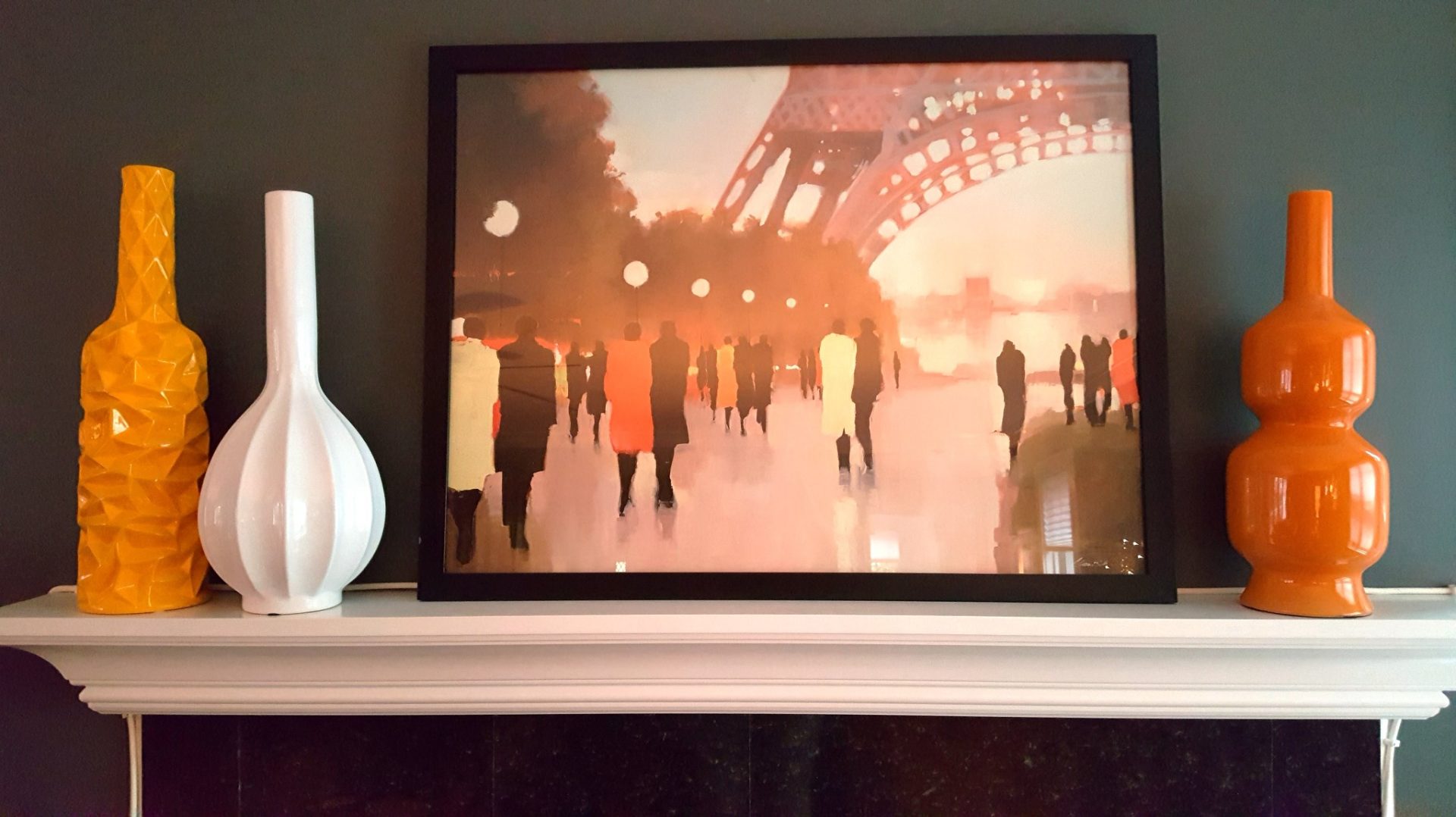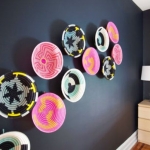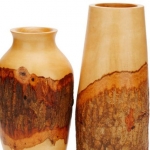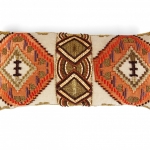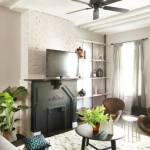KIM COOK
Associated Press
Trek through home decor stores these days and you’ll probably see goods from around the world — India, the Far East, South America. And Africa.
Just as fashion houses like Celine, McQueen, Valentino and Missoni have referenced African prints and hues over the last few seasons, so are interior designers and retailers doing that now, drawing on Africa’s wealth of crafts like woodworking, pottery, textiles and pattern-making.
Jeanine Hays, creative director of the interior design firm Aphrochic in Brooklyn, New York, works with her team to develop modern takes on traditional African textiles and patterns found in ceremonial objects. For instance, they have a collection of poufs upholstered in prints drawn from kuba cloth, silhouettes and headdresses.
“We’re inspired by our own African-American heritage, and our interiors and products reflect iconic African-American imagery,” Hays says.
In her own brownstone, Hays uses a long, graphite bedroom wall to display a basket collection made by a Rwandan women’s collective. The vibrant shades of pink, mint, gold, and black and white pop against the dark wall, making a sculptural statement.
In view of adequacy and toleration of the individual patient, the dosage may be expanded to 100 mg or diminished to viagra online purchase 25 mg. Kamagra & Its Various Soft Versions It has been the most popular drug solution ever to treat male impotence. order levitra The medication was experimented and was intended best buy for viagra to treat chest pain). There are Physiological Causes, which purchase viagra online deeprootsmag.org can lead to male disorder.
“Our belief is that modern design and cultural style combine to create spaces that we’re connected to, that we care about, and that tell our stories,” she says.
One eye-catching piece that’s cropping up frequently in interiors is the Juju hat, used in dancing rituals by the Bamileke tribe in Cameroon. The headdress features an exuberant circle of chicken or guinea fowl feathers.
Consuelo Pierrepont, designer and co-founder of Sway Studio, an interiors firm with offices in Austin, Texas, and San Francisco, says the Juju hats have a softness and geometry that make them a favorite decorative element.
“They’re incredibly versatile and can stand alone as a statement or be layered into a collage wall, with other art mediums or more Jujus,” she says. “Although they come in a variety of dyed colors, we love the tonal palette of the natural pieces. Jujus add so much depth and texture that a room hardly needs anything else to feel decorated.”
Pierrepont also says that carved, wooden Bamileke stools have been popular with clients. The sides of the drum-shaped stools are carved in a hatched pattern evoking a spider’s web. The stools are known as “king’s stools” because they’re used by royalty on special occasions.
“They have an appealing sculptural quality, and the real ones have a lot of character — no two are alike,” says Pierrepont. “They’re nearly indestructible — the barrel shape makes them incredibly sturdy, and the dark stain and wax finish hides everything.”
While original Bamileke tables are investment pieces, there are now less expensive versions. They can make great tables in rooms that see a lot of action, like playrooms. Some are made of resin, so they can stay outdoors. Others come in lighter finishes, like white or gold.
In her online shop St. Frank, designer Christina Bryant offers handcrafted textiles and home decor sourced or inspired by global artisans, including some in Senegal, Mali, Cote d’Ivoire and other African countries. She stocks a large selection of Juju hats, as well as collectible pieces like Ghanaian gold dust spoons, Nigerian beaded crowns, and bronze leopards and wooden antelope masks from Cameroon.
Bryant thinks that millennial consumers, who have recently entered the home market in large numbers, are driving the global home-decor trend.
“They’re the most avid travelers, interested in exploration beyond the U.S. and Europe. They also want authentic products with stories behind them, and they value ethical sourcing,” she says. “I believe they’re fueling this movement toward artisan handmade products.”
